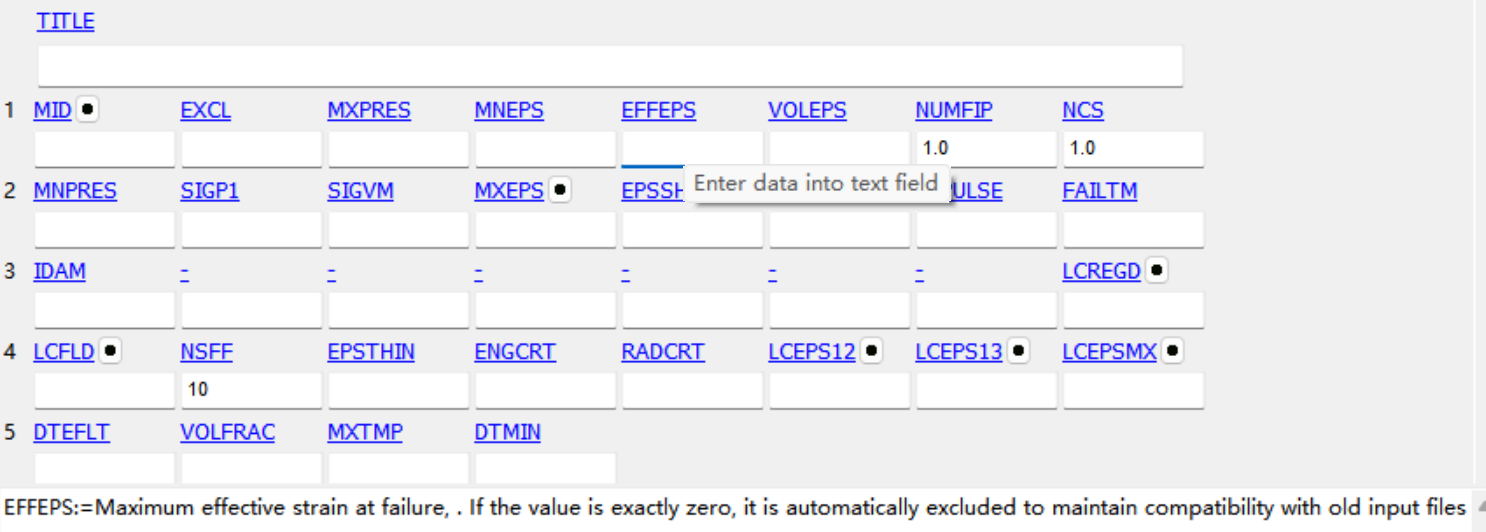TAGGED: impact, impact-analysis, lsdyna, negative-volume
-
-
December 20, 2024 at 11:22 am
Raghav
SubscriberI am doing high velocity impacts on ceramic combined with composite structure in LS-DYNA, but problem I am facing is defining the erosion criteria. I am using 2D axisymmetric modelling. The erosion criteria used in paper is giving me a "negative volume error" even after using hourglass type 4, TFFAC (Control timestep) with ERODE =1 and DTMIN as 0.5 (control termination) to counter this error.
Is there any way to determine the appropriate erosion criteria or is there any modelling error? -
December 22, 2024 at 5:49 pm
jingyeqian
SubscriberThe negative volume often occurs when some elements suffer large deformation. To alleviate this problem, the common solutions are as follows:1. Reduce the safety factor of the time step (i.e. TSSFAC, lower than 0.6, but if TSSFAC is too low, the accuracy may decrease), which could improve the stability of the calculation.2. Increase the coefficient of the stiffness hourglass.3. Check the material parameters. Using more proper parameters can effectively avoid incorrect dynamic behavior, both for the impact body and target.4. The most simple but not the most appropriate method is to adjust the threshold of effective plastic strain in the keyword *MAT_ADD_EROSION. Thus the large-deformation elements will be deleted more early. NOTE THAT: The number of the threshold should be negative, the absolute value is the effective plastic strain of deletion. -
December 23, 2024 at 6:52 am
Raghav
SubscriberHi Jingyeqian,
Thankyou for the reply. Is there any way or equation that describes TSSFAC so that an appropriate value may be decided for the model, as my result vary on changing the value of TSSFAC. I also tried to put the erosion value from effective plastic strain to maximum plastic strain at failure (MXEPS) but the solver is showing the following error "Load curve ID 4 not defined". Is it necessary to define the curve for mxeps or how can I effectively define this value?
Regards
-
December 23, 2024 at 7:04 am
jingyeqian
SubscriberThe time step can be simplified as Time step=α*Lc/C, where α is TSSFAC, Lc is the characterization length of the element, and C is sound velocity. Thus the TSSFAC is a safety factor, used to stabilize the calculation.
As for the MXEPS, it is the maximum principle strain, rather than the maximum effective plastic strain, which is EFFEPS.

-
December 23, 2024 at 7:36 am
Raghav
SubscriberHi Jingyeqian,
Thankyou for your help.
Regards
-
- You must be logged in to reply to this topic.



-
4618
-
1530
-
1386
-
1210
-
1021

© 2025 Copyright ANSYS, Inc. All rights reserved.







